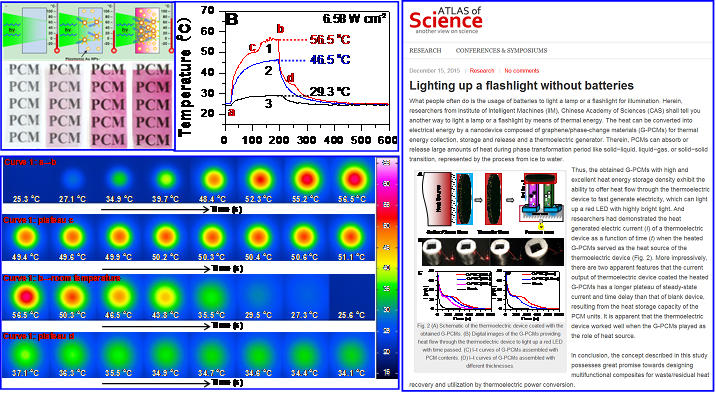As for issue of renewable sources, say, solar energy, its efficient conversion and storage has puzzled scientists for years. Recently, a study team reported their success in using a di-functional nanocomposite film to realize efficient conversion and storage of solar thermal energy.
Meanwhile, in the study, a new mechanism for solar-to-heat conversion by utilizing surface plasmon resonance and subsequent thermal storage was proposed and demonstrated by modeling, announced the team led by Prof. WANG Zhenyang from Institute of Intelligent Machines, Hefei Institutes of Physical Science, Chinese Academy of Sciences.
Solar energy, which belongs to a family of renewable sources, plays an indispensable role in human’s sustainable development. And solar heat is greatly applicable in the future energy supply. However, how to directly collect, fast convert and efficiently store solar heat is still a barrier in its application.
In fact, WANG's group has devoted years to the solar-thermal conversion and thermal energy storage utilization research.
In the previous study, they have proposed the strategy of the nanometer interface confinement to conquer many intrinsic drawbacks of inorganic hydrate salts suffering from phase separation and supercooling.
After that, in order to control heat release, they designed and synthesized the core-shell nanocomposite PCM system to realize the large adjustment of palmitic acid phase change temperature by adjusting the interaction interface.
Subsequently, brick-and-mortar microstructures of graphene oxide–polyethylene glycol (PEG) composite papers were also prepared with large area.
The freezing point of the PEG intercalated into the shaped composite paper could be successively decreased down to room temperature, while the melting point was kept constant with that of bulk PEG, which means the controlled heat release was thus achieved.
Since last year, Wang’s group has been engaged in nano-electronic device with ability of light-thermal-electrical conversion.
Based on the thermoelectric power conversion mechanism, a nanodevice composed of graphene/phase-change materials and a thermoelectric generator has successfully produced electrical energy.
This work has been published in Nanoscale, which caused the attention of researchers at home and abroad.
Based on their previous findings, this time, they develop a di-functional nanocomposite film with ability of solar-thermal conversion and thermal energy storage to realize efficient conversion and storage of solar energy.
These works were supported by the Natural Science Foundation of China and the Major/Innovative Program of Development Foundation of Hefei Center for Physical Science and Technology.

Research on solar-thermal conversion and thermal energy storage utilization (Image by ZHANG Shudong)
This article is reproduced from http://english.cas.cn/newsroom/research_news/201702/t20170221_174230.shtml .
